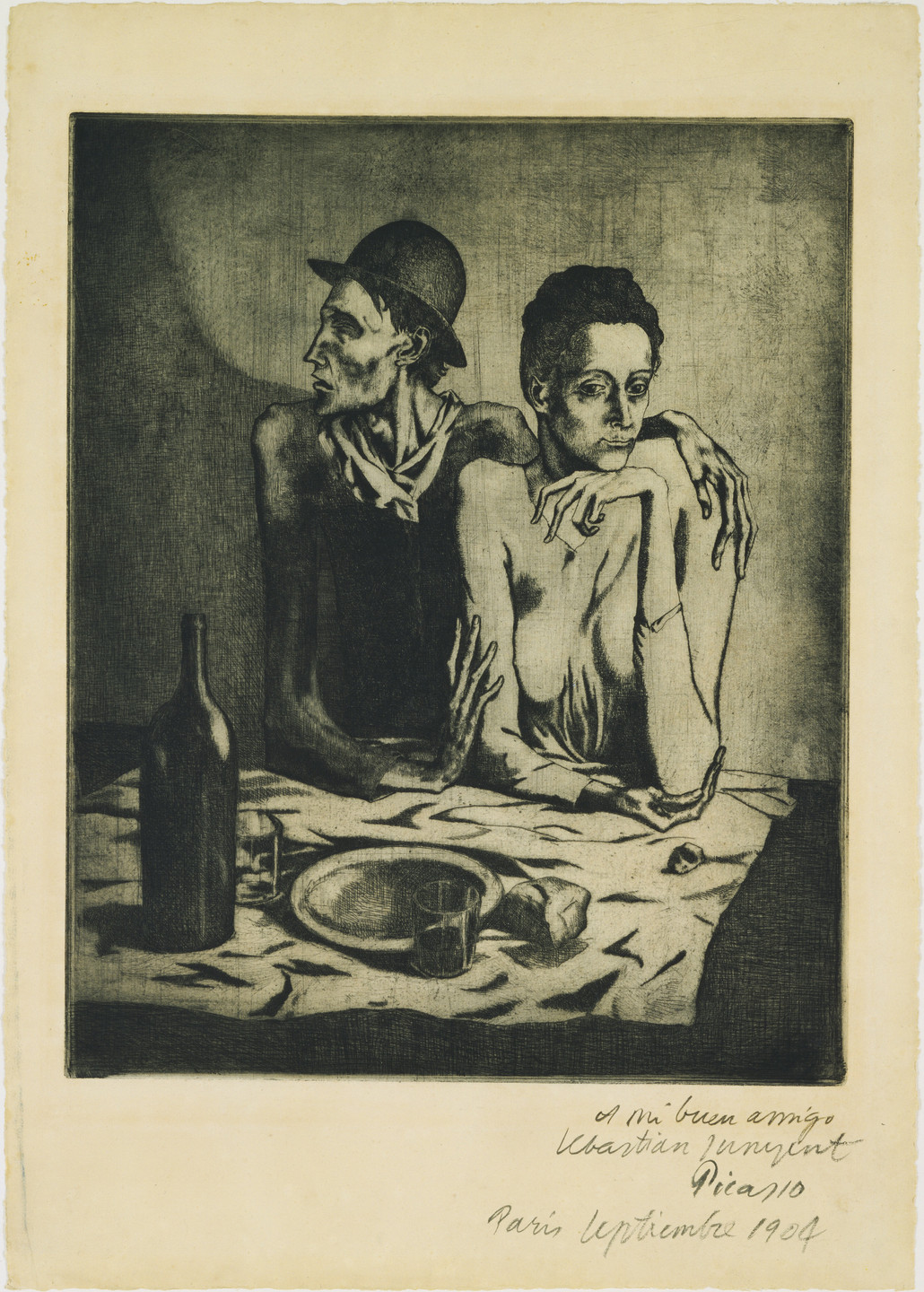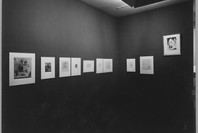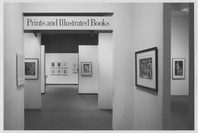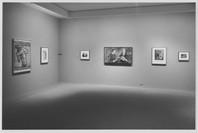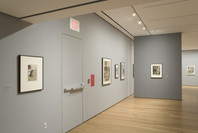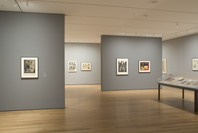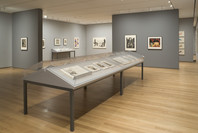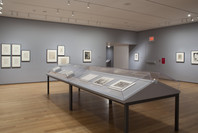This etching is Picasso's first major effort in printmaking. It became part of the series Saltimbanques, issued in 1913. This vivid example was made before the printing plate was reinforced with steel facing to make a large, later edition.
Gallery label from Picasso: Variations and Themes, March 28–September 30, 2010.
This gaunt, nearly emaciated couple sits at a bleak table on which only a few scraps of bread and a bit of wine remain. Although the man's elongated fingers tenderly clasp the woman, he, thought to be blind, turns away from her, his anguished face, with lips slightly parted, suggesting grief. Seemingly more resigned, the woman appears lost in thought as she rests her chin on her hand.
This etching was executed early in Picasso's career, when he was a struggling 23-year-old artist and had recently returned from his native Spain to Paris and settled in Montmartre. The Frugal Repast reveals the artist's feeling for humanity, especially for the poor and others on the fringes of society. Haunted, lonely people, often itinerant circus workers, populate the artist's compositions during this period.
Although it is only the second etching Picasso made, The Frugal Repast demonstrates an astonishing mastery of the medium as the artist deftly captured nuances of light and form purely with line. The soft residue of ink he allowed to remain on the plate's surface creates evocative shadows, which add to the somber mood.
Publication excerpt from The Museum of Modern Art, MoMA Highlights, New York: The Museum of Modern Art, revised 2004, originally published 1999, p. 43.
Renowned for painting as well as sculpture, Pablo Picasso is arguably the greatest printmaker of the twentieth century. He created more than two thousand printed images, working primarily in intaglio techniques but also, for extended periods, in lithography and linoleum cut. It was usually the influence of a master craftsman in a collaborative workshop that served as the impetus for Picasso's printmaking, as new techniques fueled his imagination.
Picasso's early prints reflect his evolving artistic language and his place within the major modern movements. The Frugal Repast, of 1904, shown here in a richly inked proof from the shop of printer Auguste Delâtre, evokes a sense of mystery and nobility surrounding poverty, recalling the Symbolist aesthetic of Picasso's Blue and Rose periods. Two years later, a woodcut of his companion, Fernande Olivier, betrays the simplified forms he found in Iberian sculpture and a raw expressionism inspired by tribal art.
Picasso's illustrations for Saint Matorel, with text by his friend Max Jacob, incorporate the Cubist idiom with which he is most closely associated. While this abstracted language of forms served him throughout his career, his work remained aligned with figurative imagery. In his great prints of the 1930s, created in collaboration with master printer Roger Lacourière, his allegorical inclinations are revealed, while these works also share Surrealist preoccupations with the unconscious.
Well into his later years, Picasso remained open to the potential of a new technique. He discovered lithography in the 1940s, at the workshop of Fernand Mourlot in Paris. One monumental series created there, Woman in an Armchair, exists in thirty experimental variations. In the late 1950s and early 1960s, he was stimulated by the possibilities of linoleum cut under the tutelage of Hidalgo Arnéra, a printer whose shop was near his studio in southern France. Innovations continued, as evidenced by the one-block process he devised for color printing, seen in the striking Still Life with Glass under the Lamp.
Publication excerpt from Deborah Wye, Artists and Prints: Masterworks from The Museum of Modern Art, New York: The Museum of Modern Art, 2004, p. 110.
